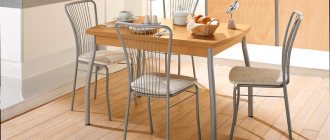The popularity of modern Indian style in the interior is not at all accidental. After all, it not only embodied our genuine interest in the pearl of the East, but also intertwined seemingly incompatible colors, materials and lines into one.
That’s why it’s so easy to find an Indian-style room in a Russian apartment.
What is it about Hindu traditions that captivates us and why should we choose this kind of design for our home?
Style Features
What attracts people in oriental design is, first of all, naturalness and originality: even just looking at a photo of Indian style, one becomes cozy and warm.
Carved decor made of natural wood, a wicker chair or a forged flower stand create a feeling of comfort, and a colorful carpet on the floor, original ornaments, bright colors of textiles and handmade trinkets will turn the room into a real celebration of color.
The design in the Indian style will be complemented by arches and niches, which produce a special decorative effect.
Stylistic palette
We are all familiar with delicious Indian seasonings: spicy curry, aniseed-scented fennel, “sizzling” mixtures of cumin, cloves, cardamom, cinnamon, ginger and laurel leaves. All these ingredients have a unique, bright aroma - so, the Indian interior is also akin to a “festival of taste”, but embodied in a slightly different aspect - visual. And this is really so, because, looking at the color scheme of the decor in the Indian style, you begin to involuntarily catch the subtlest smell of Indian spices.
A colorful Indian interior always delights with a variety of tart and rich colors, combining deep purple with heavy burgundy, light blue, natural green, delicious chocolate, exquisite gold, warm yellow, simple milky and ordinary white.
red and crimson are the characteristic colors of Indian interior style
From general to specific
The elegance of Indian style is hidden in simple details and attention to the finishing of every element of the room. The walls are usually covered with warm-colored paint, decorated with characteristic ornaments, wooden carvings or wallpaper stylized as expensive fabrics.
A bright stretch or figured multi-level ceiling will ideally complement the room, and in some cases even correctly selected ceiling wallpaper will sparkle with new colors.
To cover the floor in Indian traditions, natural materials are used - wood and stone, and in the modern interpretation of the oriental style, 3D floors are perfect.
Characteristic features of Indian style.
India is a very vibrant country with its own centuries-old traditions, which, of course, are manifested in the interior designs of houses. By the way, housing for Indians has a special character; it is not just a place where you can sleep or eat, it is a real oasis where a true Indian relaxes not only physically, but also mentally. In addition, the residents of this wonderful country are very hospitable, so they pay great attention to the comfort of their home. Well, as for some characteristic features of this ethnic trend, it is definitely worth highlighting the following everyday notes:
- Mostly wooden furniture with carved elements is used;
- Hand-painted furniture and walls are welcome;
- It is not uncommon to see wicker rattan furniture;
- Bright textile items with embroidery or ornate patterns;
- The floors are covered with original carpets with oriental patterns;
- Wall niches and arched door and window openings;
- Floral prints everywhere;
- Forged elements on furniture;
- Stucco on the ceiling;
- Stained glass in doors or windows;
- An abundance of ethnic decorative items (more details below in the review);
- Carved wooden partitions used for zoning rooms.
Current color palette.
At the beginning of this review, it was not in vain that we used the phrase “interior holiday” in relation to this style; the fact is that the Indian style is famous for the use of bright colors when decorating homes. Everyone knows about the love of true Indians for wearing bright clothes - women's saris and men's dhotis. Do you know how they used to dye fabrics in India, which were then used for sewing clothes and other household items? For these purposes, bright leaves of plants were used, as well as seasonings for dishes. It was by the type of plants growing in India, as well as the resulting color of the fabric, that it was possible to determine where the latter was produced. The Indian style is characterized by indigo color, which was produced from the rare indigofera plant. And the purple color was extracted from scarlet snails crushed in water, the red color alizarin is a derivative of madder root, and there are many such examples. But let us present to your attention the most characteristic colors of a given country in the form of a list:
- Rich purple;
- Deep blue;
- Aristocratic burgundy;
- Airy blue;
- Vanilla;
- Grassy green;
- The color of the sun;
- Noble gold;
- Strict bronze;
- Coffee;
- White;
- Terracotta;
- Amber;
- Ivory;
- Indigo.
The following types of precious stones are mined in India - sapphires, rubies and emeralds, as well as semi-precious stones - citrines, garnets, amethysts, peridots, blue topazes. This means that the shades of these stones are also characteristic of the style in question.
Living room
A carved wooden sofa upholstered in velvet, suede or velor will decorate any living room. You can hide many drawers in it, and put the famous Indian multi-colored pillows on top.
The picture will be complemented by armchairs matching the style, a wooden coffee table and several different shelving units. Here you can show your creativity by decorating furniture with carvings or drawings.
The decor of a room in the Indian style is very diverse: you can afford copper floor vases, panels, figurines, richly decorated lamps, heavy curtains and everything that your ingenuity is capable of.
Bathroom
For a bathroom, an excellent solution would be light wall colors (for example, white, sand, beige or amber) and a slightly darker floor. The color of the bathroom and the rest of the plumbing should not contrast too much - often it is gray or cream.
Indian style details and decor
In India, much attention is paid to arched interior design. Carved wooden arches, as a tribute to temple architecture, decorate not only doorways, but also cabinet doors, mirror frames, backs of sofas, beds and armchairs. Wooden screens with rich carved patterns are inlaid with beads, stones, covered with colored varnish or decorated with hand painting. Such a piece of furniture will give the room an Indian flavor and, if desired, delimit the functional areas of the room. To add completeness to the Indian style in the interior, details and accessories that adorn the houses of a fairyland in abundance will help:
- Many small pillows and bright pillowcases made of fabrics of various textures, embroidered with ornaments, beads, beads, depicting gods, animals or flowers;
- Scented candles, metal carved candlesticks, decorative figurines of the Indian pantheon of gods, made of ivory or wood;
- Copper dishes, elegant metal vases and jugs, complemented by chasing or coated with colored enamel;
- Wooden or metal bells that are hung from the ceiling or in door arches (they sway when the wind blows, emitting subtle, melodic sounds, bringing lightness and harmony to the house);
- Huge variety of textiles. Walls, ceilings, and canopies are decorated with fabrics of different textures. Bedspreads and tablecloths often appear in the form of multi-layer structures made of fabrics in bright colors.
A few more words about decor
One of the main things in creating an oriental style is the correct selection of attributes.
In addition to those described earlier, the room will be wonderfully complemented by embroidery on linens and pillows, a chessboard and many different figurines, aromatic lamps and incense, images of deities, wind chimes and Indian drums, as well as many well-known and beloved elements of the East. The main thing is not to go overboard in choosing accessories!
Using these tips, you can easily decorate other rooms. So, a dining room, corridor or Indian-style kitchen will look very original and fresh.
Creating such a design is not so difficult, and in return it will delight you with an atmosphere of calm and serenity for many years.
Main characteristics and features of Indian interior style
This design has many recognizable nuances and techniques. If you want to create a little India at home, you will have to take them into service.
Here are the main features of Indian interior style:
- Architectural solutions . As a rule, windows, doorways and niches in the walls are designed in the form of arches - a detail characteristic of Eastern traditions. The doors themselves are often works of art with rich carvings, inlaid stones, and fabric draperies. As for the walls, most often they are simply painted in one tone.
- Floor . Traditionally it is made of stone - the climate in India is hot. But wooden covering is allowed. An important attribute of the “Indian floor” is a richly patterned carpet.
- Ceiling . Stretch ceiling is an invention originally from India. It is a canopy of fabric flowing from the center to the edges of the room in beautiful draperies. If this solution is too radical, use a regular colored ceiling, plain or painted. Elements made from slats look interesting.
- Color solutions . For decoration, use juicy, rich and deep shades: crimson, turquoise, saffron, indigo, scarlet, golden, green, berry purple, emerald. The palette and abundance of glitter are designed to create a festive atmosphere in the house in the best traditions of happy endings a la Bollywood. For those for whom a riot of colors hurts the eye, there is a more restrained direction of Indian design - Hindi. It has a calmer color scheme, a minimum of bright accents - for example, an embroidered carpet on the floor is enough.
- Furniture . Low, graceful, magnificent - this is how Indian-style furniture can be described. Squat tables, luxurious sofas with shag upholstery, chairs, ottomans and light wooden screens. The latter are used, among other things, for zoning indoor space. Everything is decorated with rich carvings and inlays, forging, and embossing. At the same time, there are few pieces of furniture, and all of it, with the exception of the table, is placed along the walls. Important points are natural materials (teak wood, rattan) and mandatory varnish coating of surfaces. It is curious that both varnishing and rich inlays initially served purely practical purposes. They had to protect tables and chairs from two misfortunes - high humidity and termites.
- Ornaments . There is a lot of painting and embroidery in the interior. The upholstery of sofas and armchairs, pillows and bedspreads, curtains, carpets, carvings on furniture, screens, lampshades - all this is decorated with patterns. The main types of Indian ornaments: paisley (“cucumber”), mandala, plant motifs with the obligatory lotus, images of animals, solar symbols, geometric figures. Interestingly, each drawing has a meaning. The lotus, for example, means enlightenment and wisdom, the star - hope. Embroidery is often complemented with beads, metal parts or small mirrors.
- Light . As a rule, the lighting is dim, intimate, and there are several light sources.
- Textiles . India loves fabrics, and therefore the interior is replete with textiles. Shawls, bedspreads, numerous pillows, carpets, curtains, tablecloths, canopies, embroidered panels on the wall are important elements of an Indian-style interior. Of course, the materials must be completely natural - wool, silk, cotton.
- Accessories . It is impossible to do without them - this is exactly the case when “the king is played by his retinue.” Bronze elephants, chased copper dishes, metal jugs, aroma lamps, boxes, figurines of Indian gods, candlesticks and candelabra, forged lamps - all these exotic things make the interior truly exotic. Sometimes a couple of such trinkets are enough to transform the atmosphere and fill it with the spirit of mysterious India.











